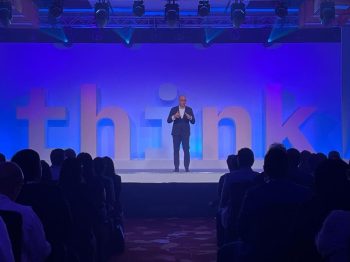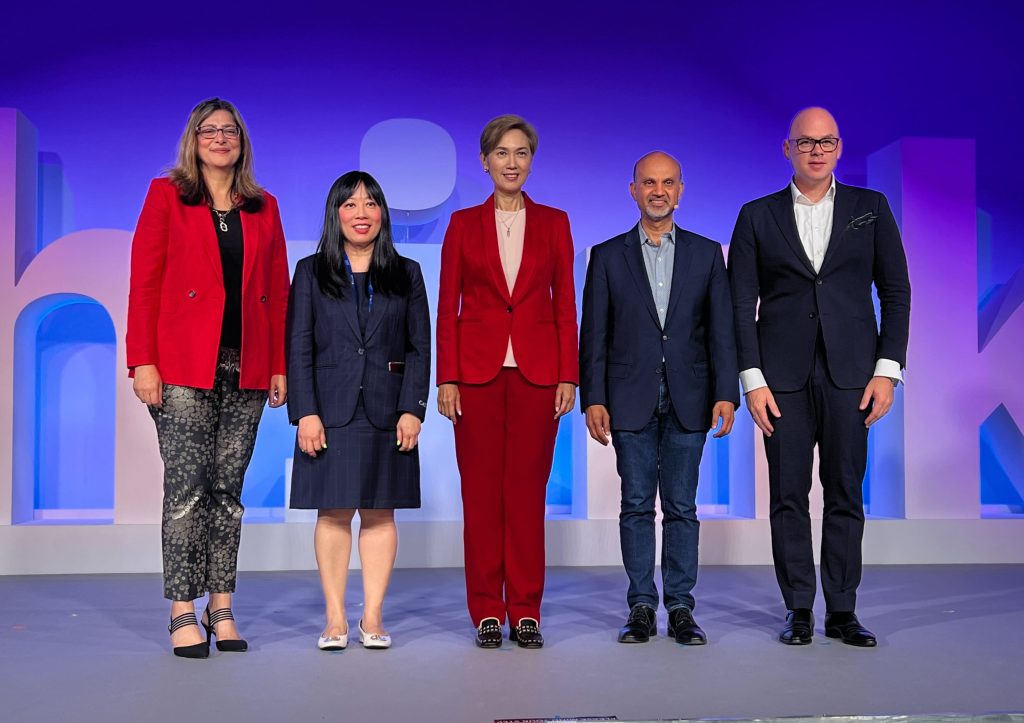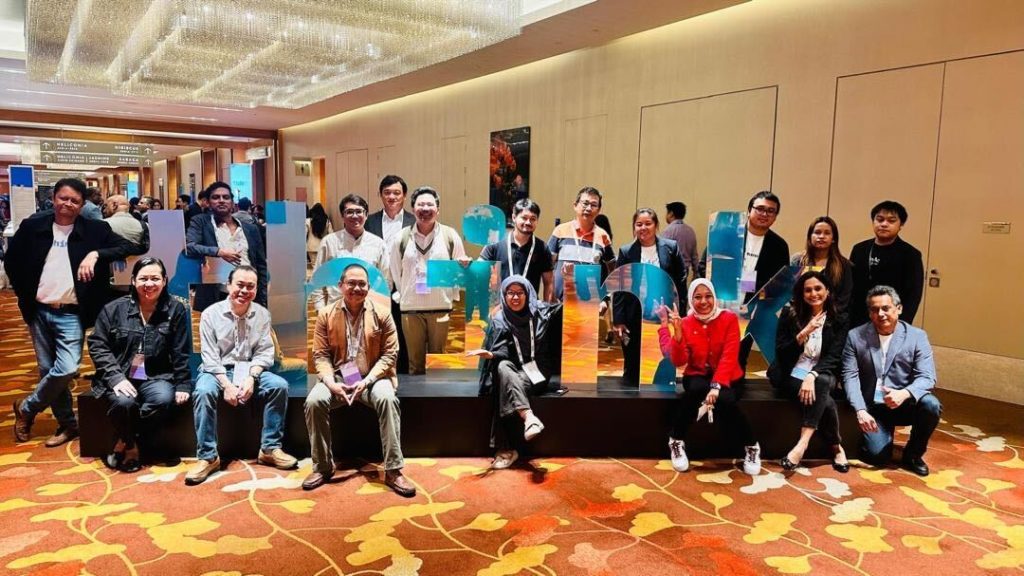
Written by: Bailey Martin, Tech Journalists, AOPG.
IBM, long known as the titan of tech, has been a constant in the ever-evolving world of business since its founding in 1911. The company’s longevity is a testament to its enduring focus on building technology solutions specifically designed to address the unique challenges and opportunities faced by enterprises.
It’s no surprise, then, that IBM Think’s Singapore stop this year focuses on critical issues surrounding Artificial Intelligence (AI) adoption and readiness for businesses in ASEAN. The event highlights IBM’s achievements with its watsonx AI platforms, which are instrumental in overcoming these challenges. At IBM Think 2024 in Singapore, a central theme emerged: IBM’s openness. The company is transparent about the challenges enterprises face with AI and is dedicated to helping them adapt safely and effectively. Even IBM’s watsonx platforms are open-source, allowing clients to customise and innovate with AI – I will share more on this later, along with IBM’s findings on the enterprise AI landscape for ASEAN. There’s much to explore, so let’s dive in.
What’s Holding Up AI Advancement for Enterprise in ASEAN?
This notion may come as a shock given the recent major investments in AI servers and data centres across Asia to accommodate the implementation of AI solutions throughout the region. But looks can be deceiving. A significant percentage of observed organisations in ASEAN had overestimated how ‘transformative’ they were in terms of AI adoption compared to their actual ‘AI readiness’ scores, as pointed out by Ullrich Loeffler, CEO of Ecosystem. IBM and their partner Ecosystems discovered a significant gap between companies’ optimism on their AI readiness being in the ‘transformative stage’ (39% of participant organisations) and the actual percentage of organisations that were scored as ‘transformative,’ which was considerably lower (only 4% of participant organisations). So, while ASEAN countries have made great strides towards the accessibility and use of AI, it turns out that some companies may not be as well prepared to properly implement AI solutions into their operations.
This issue can be down to a few factors, one of which is the need for more talent and upskilling on AI in these regions. Catherine Lian, GM of ASEAN, IBM pointed out that ‘Talent Readiness’ is what appeared to be one of ASEANs challenges. Overall, a more AI-capable workforce across all departments is an additional requirement for seamless utilisation of AI. The first step in solving a problem is recognising there is one… There are indeed some companies who are aware of this problem and have begun investing in the right resources early to overcome this ‘hurdle.’ For instance, Lee Li Foon, CIO of Bank Simpanan Nasional (BSN) in Malaysia, had shared that major investments by BSN and blue-chip organisations have been focused on training and upskilling the upcoming workforces on AI as well as bringing more AI-specific ‘talent’ into Malaysia.
These are major looming issues that require acknowledgement from groups across the ASEAN region before taking steps to solve them. Of course, there are additional complexities when it comes to AI for enterprises and that is that a fixed model, no matter how extensively configured, is not reliable to be implemented across so many different departments. Some people-focused departments such as HR or CRM may have different aims for AI implementation, such as automation of repetitive processes, compared to IT teams which would focus on innovating like code generation. This is exactly why IBM’s watsonx AI is open-sourced.

IBM’s Hard-Fought Successes and Approaches to Enterprise-designed AI
As previously mentioned, watsonx is open-sourced. This allows for fine-tuning and augmented data retrieval so that a business’s AI can be better equipped to handle specific tasks. This helps enterprises with greatly differing methods or focuses in using AI. However, IBM’s real key to success lies in their segmented platform variants of watsonx. IBM offers watsonx platforms to optimise: AI, Data, Governance, and Assistance. Each of those specialised platforms focuses on progressing AI in the corresponding factors, Organisational Strategy, Data Foundation, People and Skills, and Governance.
With these pre-prepared open-sourced platforms, companies may use watsonx across multiple disciplines for different departments, dealing with the challenge of different AI needs within the same organisation mentioned earlier. watsonx allows for room to innovate while still providing a discipline-specific pre-trained model to serve as a solid foundation. Overheads are reduced, tuning is vastly more cost-effective, and a solid framework greatly reduces the odds of incidental AI hallucinations.
Now, onto the issue of AI preparedness across ASEAN enterprises: Talent and upskilling are crucial, as well as having businesses that are self-aware regarding their AI readiness. While not all enterprises may recognise this, thankfully IBM and their vendor partners do. IBM Consulting has been working alongside partners to actively engage with businesses and support them through all stages of AI adoption and adaptation.
Erika Valenciano, Product Manager at VST-ECS in the Philippines, clarified that there is no ‘one-size-fits-all’ approach to dealing with this problem. Although there are guidelines to follow, it is truly a case-by-case basis that requires VST-ECS to work closely with clients, consult them, and educate them on watsonx implementation. Even after AI adoption is complete, IBM Consulting emphasises the importance of aftercare and follow-up. As IBM’s Catherine, stated at IBM Think’s panel, “AI is not an end-point solution – it’s a journey.” Companies will always need to reconfigure their AI models over time, and IBM Consulting will be there to support enterprises through these changes.
For example, SingHealth’s use of IBM AI before Covid-19 wreaked havoc on the world, allowed them to quickly tune their AI to change processes and accommodate new Covid-specific regulations. IBM may not claim to predict the future – but they can certainly claim to have the resources to react and adapt to whatever the future throws at us.

Where Will IBM Go From Here?
To be honest, this question is rhetorical, as one cannot predict what the future holds. IBM once emphasised the application and promise of quantum computing, but this has now been sidelined and overshadowed by watsonx, given its almost spontaneous burst into the commercial landscape—something that quantum computers are too ahead of their time for. Things changed quickly, and IBM reacted to what the issues observed in AI were. What can be appreciated, however, is the almost global acceptance of LLMs and GenAI. IBM certainly has a significant part to play in this and thanks to their openness on key issues around AI for enterprise, as well as their facilitating for innovation with watsonx platforms, we can be confident that enterprises won’t be forced to navigate upcoming AI obstacles in the dark.
 (0)
(0) (0)
(0)Archive
- October 2024(44)
- September 2024(94)
- August 2024(100)
- July 2024(99)
- June 2024(126)
- May 2024(155)
- April 2024(123)
- March 2024(112)
- February 2024(109)
- January 2024(95)
- December 2023(56)
- November 2023(86)
- October 2023(97)
- September 2023(89)
- August 2023(101)
- July 2023(104)
- June 2023(113)
- May 2023(103)
- April 2023(93)
- March 2023(129)
- February 2023(77)
- January 2023(91)
- December 2022(90)
- November 2022(125)
- October 2022(117)
- September 2022(137)
- August 2022(119)
- July 2022(99)
- June 2022(128)
- May 2022(112)
- April 2022(108)
- March 2022(121)
- February 2022(93)
- January 2022(110)
- December 2021(92)
- November 2021(107)
- October 2021(101)
- September 2021(81)
- August 2021(74)
- July 2021(78)
- June 2021(92)
- May 2021(67)
- April 2021(79)
- March 2021(79)
- February 2021(58)
- January 2021(55)
- December 2020(56)
- November 2020(59)
- October 2020(78)
- September 2020(72)
- August 2020(64)
- July 2020(71)
- June 2020(74)
- May 2020(50)
- April 2020(71)
- March 2020(71)
- February 2020(58)
- January 2020(62)
- December 2019(57)
- November 2019(64)
- October 2019(25)
- September 2019(24)
- August 2019(14)
- July 2019(23)
- June 2019(54)
- May 2019(82)
- April 2019(76)
- March 2019(71)
- February 2019(67)
- January 2019(75)
- December 2018(44)
- November 2018(47)
- October 2018(74)
- September 2018(54)
- August 2018(61)
- July 2018(72)
- June 2018(62)
- May 2018(62)
- April 2018(73)
- March 2018(76)
- February 2018(8)
- January 2018(7)
- December 2017(6)
- November 2017(8)
- October 2017(3)
- September 2017(4)
- August 2017(4)
- July 2017(2)
- June 2017(5)
- May 2017(6)
- April 2017(11)
- March 2017(8)
- February 2017(16)
- January 2017(10)
- December 2016(12)
- November 2016(20)
- October 2016(7)
- September 2016(102)
- August 2016(168)
- July 2016(141)
- June 2016(149)
- May 2016(117)
- April 2016(59)
- March 2016(85)
- February 2016(153)
- December 2015(150)
